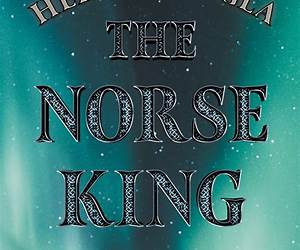Heimskringla: An Interpretation (Volume 483) (Medieval and Renaissance Texts and Studies) By Birgit Sawyer Hardcover 0866985387 9780866985383 Heimskringla: An Interpretation (Volume 483) (Medieval and Renaissance Texts and Studies) After brief summaries of early Norwegian history, Snorri Sturluson’s career, and previous studies of Heimskringla , the core of this book is a detailed and comprehensive analysis of the text. It is normally treated as a collection of sagas about Norwegian kings, but there is no evidence that Snorri planned such an arrangement. Indeed, in his preface Snorri described the book as an account of ‘chieftains who had dominium in the North and were speakers of the Danish tongue,’ that is, not only kings but others ‘of exalted lineage.’ Some of these chieftains and their kin figure prominently and are judged favourably by Snorri than most kings. Moreover, most of the conflicts described by Snorri were not between individuals but involved their families and adherents, including women who often have important and active roles, and sometimes apparently express Snorri’s own views. The main conclusion of this study is that Snorri — who was himself a chieftain ( goði) — wrote Heimskringla during the reign of Håkon Håkonsson (1217–1263) to criticize the development of the central power of king and church at the expense of the traditional authority of chieftains. A comparison with Gesta Danorum by Snorri’s Danish contemporary Saxo Grammaticus, shows that they were both masters of the art of ambiguity. The fact that a fine copy Heimskringla was made c. 1260 may imply that it contained much that was approved by King Håkon’s opponents.
After brief summaries of early Norwegian history Snorri Sturluson s career and previous studies of Heimskringla the core of this book is a detailed and comprehensive analysis of the text It is normally treated as a collection of sagas about Norwegian kings but there is no evidence that Snorri planned such an arrangement Indeed in his preface Snorri described the book as an account of chieftains who had dominium in the North and were speakers of the Danish tongue that is not only kings but others of exalted lineage Some of these chieftains and their kin figure prominently and are judged favourably by Snorri than most kings Moreover most of the conflicts described by Snorri were not between individuals but involved their families and adherents including women who often have important and active roles and sometimes apparently express Snorri s own views The main conclusion of this study is that Snorri who was himself a chieftain go i wrote Heimskringla during the reign of H kon H konsson 1217 1263 to criticize the development of the central power of king and church at the expense of the traditional authority of chieftains A comparison with Gesta Danorum by Snorri s Danish contemporary Saxo Grammaticus shows that they were both masters of the art of ambiguity The fact that a fine copy Heimskringla was made c 1260 may imply that it contained much that was approved by King H kon s opponents Heimskringla An Interpretation Volume 483 Medieval and Renaissance Texts and Studies.
Heimskringla ebooks free

| Heimskringla: An Interpretation (Volume 483) (Medieval and Renaissance Texts and Studies) By Birgit Sawyer |
| 0866985387 |
| 9780866985383 |
| English |
| 178 |
| Hardcover |
| heimskringla saga |
| heimskringla tekst |
| heimskringla 1899 norwegian edition |
| heimskringla online |
| heimskringla 1899 utgave til salgs |
| heimskringla odin |
| heimskringla vol. i |
| heimskringla niedner |
| Book heimskringla |
| Book heimskringla pdf |
| Book heimskringla saga |
| Heimskringla book |
| Heimskringla booking |
| Heimskringla booklet |
| Heimskringla booker |